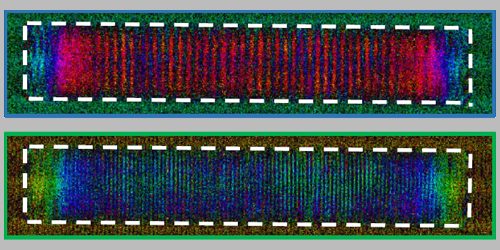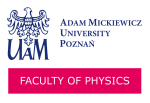7.2.2021
Article in APS Physics – Synopses

The APS published the commentary Making Space-Time Crystals Using Magnons in the Physics 14, s16, in section Synopses, about the paper by Paweł Gruszecki and Maciej Krawczyk Phys. Rev. Lett. 126, 057201 (2021) . We are posting the reprint of the commentary by Sophia Chen.
Making Space-Time Crystals Using Magnons
February 3, 2021• Physics 14, s16
Electron spin waves condense to form an exotic new state that repeats in both space and time.
Researchers in the field of spintronics aim to exploit the properties of materials’ electron spins to develop new, more energy-efficient information technologies. Such schemes often involve encoding and transmitting data via quasiparticles called magnons—collective excitations of electron spins. Now, Joachim Gräfe, of the Max Planck Institute for Intelligent Systems, Germany, and colleagues have used magnons to form a new state of matter called a space-time crystal, and they have studied how this state interacts with other magnons [1].
Just as a conventional crystal is defined by a pattern that repeats in space, a space-time crystal has a varying structure that also repeats in time. Such structures have only recently been realized experimentally (see Viewpoint: How to Create a Time Crystal). Gräfe and colleagues created their space-time crystal by applying a radio-frequency field to a micrometer-scale, room-temperature strip of nickel-iron alloy. The field excited magnons that formed a dynamic spatial pattern, which the researchers liken to an arrangement of balls on a billiard table—if billiard balls returned repeatedly to their initial collective state after dispersing.

After imaging the space-time crystal using x-ray microscopy, the researchers directed other magnons toward it. They found that these magnons were scattered similarly to how they would be from a conventional crystal. This scattering process produced ultrashort magnons whose precise wavelengths could be tuned by changing the parameters of the radio-frequency field. The researchers say that the ability to easily reconfigure the space-time crystal in this way, coupled with its room-temperature operation, make the device a suitable platform for magnon-based information technology.
–Sophia Chen
Sophia Chen is a freelance science writer based in Columbus, Ohio.

